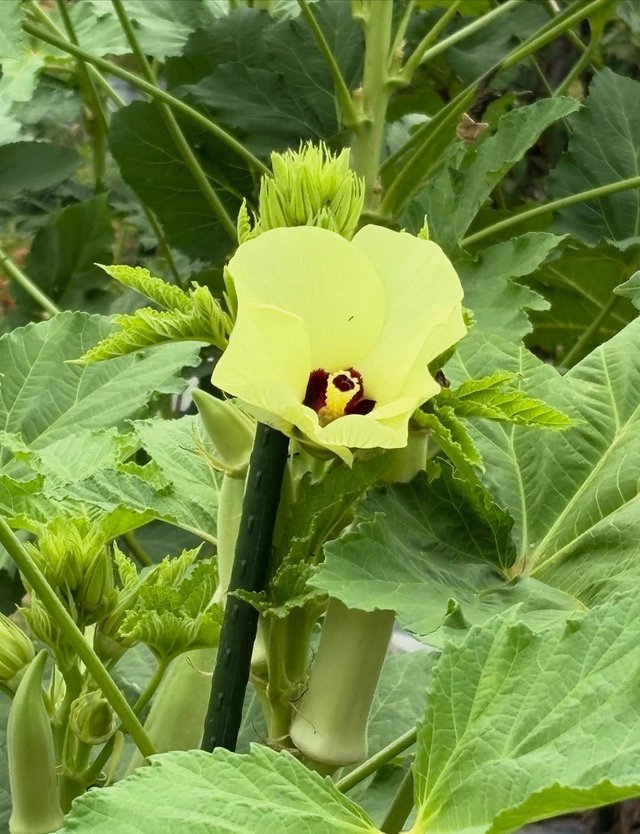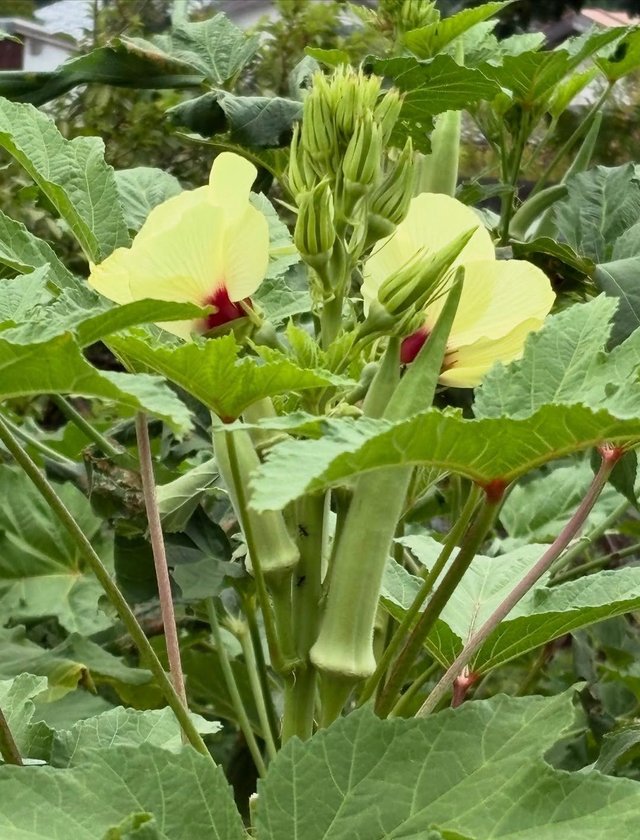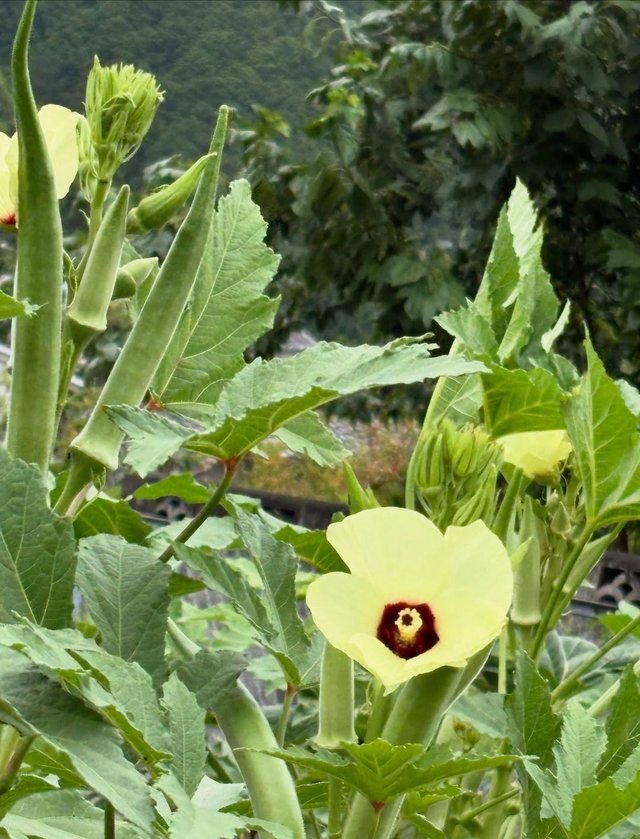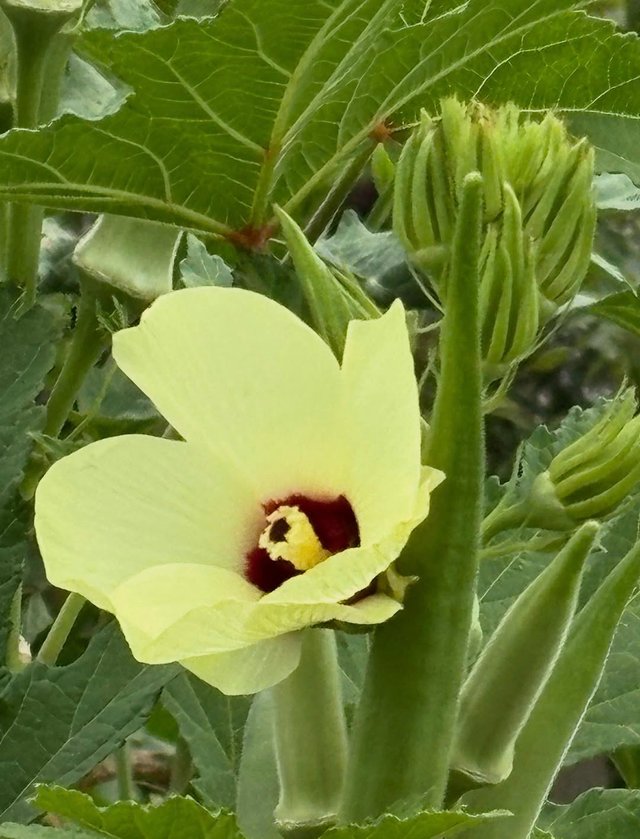Okra Flower
The Okra flower, is a beautiful and delicate bloom that adds both ornamental and agricultural value to the plant. It typically appears as a large, hibiscus-like blossom with five petals that are creamy yellow or pale white, often accented with a striking dark maroon or purple center that creates a vivid contrast. These flowers are usually short-lived, blooming for just a single day, but they open wide in the morning and attract a variety of pollinators, especially bees, which play a crucial role in the pollination process and subsequent fruit production. The Okra plant is a warm-season crop grown widely in tropical, subtropical, and temperate regions, and its flowers are not only admired for their beauty but also essential for producing the edible green pods that are highly valued in cooking across many cultures.
The flower itself emerges from the leaf axils and gives way to the elongated seed pods within a few days after pollination. Beyond their agricultural role, Okra flowers carry symbolic and cultural importance in some regions, representing fertility and productivity due to their direct association with the yield of the plant. They are also related botanically to the hibiscus and cotton family, which explains their ornamental charm and large showy petals. Although the primary focus of cultivation is the pod, the flowers are sometimes used in traditional remedies, as various parts of the plant, including the blossoms, contain mucilaginous compounds and bioactive substances believed to have medicinal benefits.
The fleeting nature of the Okra flower adds a layer of fascination, as each bloom exists only for a short time before fading, leaving behind the promise of nourishment in the form of tender pods. This transient beauty and functional significance make the Okra flower a unique representation of the connection between aesthetics and utility in the plant kingdom.




